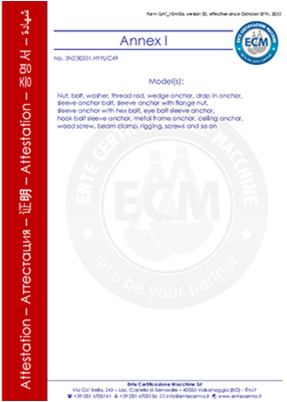dec . 05, 2024 09:38 Back to list
Designing Effective Foundation Anchors with Retrofit Bolt Solutions for Enhanced Stability
Retrofit Foundation Anchor Bolts Enhancing Structural Integrity
In the world of civil engineering and construction, ensuring the stability and safety of structures is paramount. One of the critical aspects of this process is securing foundations, especially in areas prone to seismic activity or where soil conditions are less than ideal. Retrofit foundation anchor bolts have emerged as a crucial element in enhancing the resilience of buildings. This article explores the importance, application, and installation of these anchor bolts.
Understanding Retrofit Foundation Anchor Bolts
Retrofit foundation anchor bolts are specially designed fasteners used to secure a building's foundation to the underlying soil or concrete. These bolts are crucial for improving the lateral load capacity of structures, particularly in houses and buildings built before modern seismic codes were established. Their purpose is to prevent uplift, sliding, and overturning during adverse conditions such as earthquakes or high winds.
Typically made from high-strength steel, retrofit anchor bolts can significantly enhance the performance of a building's foundation. When properly installed, these bolts help to mitigate the risks associated with structural failures and provide peace of mind to homeowners and builders alike.
The Importance of Retrofit Anchor Bolts
The significance of retrofit anchor bolts lies in their ability to reinforce existing structures. Many older buildings were constructed without the foresight of modern engineering principles regarding lateral stability. As a result, these structures may lack the necessary support to withstand natural disasters. The installation of retrofit anchor bolts can effectively bridge this gap.
In seismic zones, buildings must be designed to resist not only vertical loads but also lateral forces generated by earthquakes. Without adequate anchoring, foundations can shift, leading to significant damage or even collapse. Retrofit anchor bolts establish a firm connection between the foundation and the structure above, greatly improving the building's overall stability.
Applications of Retrofit Foundation Anchor Bolts
Retrofit anchor bolts are commonly applied in several scenarios, including
1. Seismic Retrofitting In earthquake-prone areas, retrofitting older structures with anchor bolts is vital. These bolts help to secure the foundation and prevent the building from moving off its base during seismic events.
2. Flood Resistance In flood-prone zones, buildings can experience uplift forces due to groundwater. Anchor bolts help maintain the position of the foundation, reducing the risk of structural damage.
retrofit foundation anchor bolts

3. Wind Resistance In regions facing severe storms or hurricanes, retrofit anchor bolts play a crucial role in resisting high wind forces, thus preventing roof and wall failures.
Installation Process
The installation of retrofit foundation anchor bolts requires careful planning and execution. Below are the typical steps involved
1. Assessment A structural engineer evaluates the building to determine the necessary type and number of anchor bolts required based on the specific needs and local regulations.
2. Drilling Holes are drilled into the existing foundation to accommodate the anchor bolts. This step needs precision to ensure the bolts fit securely.
3. Clearing Debris Any dust or debris inside the holes must be cleared to provide a clean surface for the epoxy or adhesive that will secure the bolts.
4. Placement of Bolts The anchor bolts are inserted into the holes, often secured with an epoxy or grout mixture to enhance their strength and stability.
5. Curing Once installed, the anchoring system must allow time for the epoxy or grout to cure fully before applying any loads or stress to the structure.
6. Final Inspection A qualified engineer or inspector reviews the installation to ensure it meets local codes and standards.
Conclusion
Retrofit foundation anchor bolts are indispensable in ensuring the safety and stability of structures, particularly older buildings that may not meet current seismic or safety standards. By reinforcing foundations, these anchor bolts enhance resilience against natural disasters, making them a vital investment for homeowners and builders alike. As our understanding of structural integrity continues to evolve, the adoption of retrofit techniques will undoubtedly play a key role in safeguarding lives and property against the unpredictable forces of nature.


